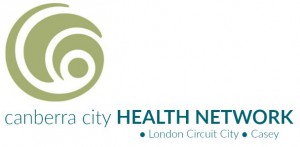Acupuncture and Women’s Health in Australia
In Australia, Traditional Chinese Medicine (TCM) is commonly used in women’s health. As TCM has been in use for thousands of years, it has played a vital role in gynecological health particularly in Asia when conventional sciences were yet to emerge. TCM always aims to treat an individual as their body specifically requires as opposed to focusing on the disease alone.
As the female reproductive system is much more complex than a males, the underlying physiology and health requirements are also taken into account when treatments are planned. Currently, there are many systematic reviews compiling data of thousands of clinical trials, implicating acupuncture can successfully treat or complement treatment for gynecological and reproductive conditions.
While the mechanisms of acupuncture in treating gynecological and reproductive conditions are not fully understood, the scale of or research activity has increased in the recent 20 years [2]. Systematic reviews of these clinical trials have shown that acupuncture treatments compared with conventional care, or adding it as a complementary therapy may improve desired outcome measures. As acupuncture works by modulating the central nervous system[4], there is also evidence it can modulate levels of various hormones and influence ovulation [1][5].
Acupuncture is used commonly to treat menstrual pains (dysmenorrhea) [8][12][13] as it affects up to three in four women at some stage in their life. In conditions such as polycystic ovarian syndrome (PCOS) and endometriosis, these modulatory effects of acupuncture on hormones and ovulation has led to increased interest for research since 1987. Currently systematic reviews of clinical research implicates acupuncture may be postulated to have the potential to treat endometriosis[12][13], PCOS and a number of common gynecological conditions [1][5][3][7][8].
Other areas being researched are outcomes associated with childbirth and symptoms and pains associated with pregnancy and labor. As there is a benefit to minimize the use of medications in those particular circumstances, acupuncture has been used in achieving desired outcomes in pregnancy and also for pains and symptoms experienced during labor [3][6][9][10][11].
REFERENCES
- Chen, H., & Lim, C. E. D. (2019). The efficacy of using acupuncture in managing polycystic ovarian syndrome. Current Opinion in Obstetrics & Gynecology, 31(6), 428–432. https://doi.org/10.1097/gco.0000000000000582
- Cochrane, S., et al. (2014). Acupuncture and women’s health: an overview of the role of acupuncture and its clinical management in women’s reproductive health. International Journal of Women’s Health, 313. https://doi.org/10.2147/ijwh.s38969
- Cochrane, S., et al. (2016). Prior to Conception: The Role of an Acupuncture Protocol in Improving Women’s Reproductive Functioning Assessed by a Pilot Pragmatic Randomised Controlled Trial. Evidence-Based Complementary and Alternative Medicine, 2016, 1–11. https://doi.org/10.1155/2016/3587569
- Huang, WJ., et al. (2012). Characterizing acupuncture stimuli using brain imaging with fRMRI – A systematic review and meta-analysis of the literature. US National Library of Medicine National Institutes of Health. 7(4). doi: 10.1371/journal.pone.0032960.
- Li, J., et al. (2014). Effect of electroacupuncture on egg quality and tumor necrosis factor -α of patients with polycystic ovarian syndrome. World Journal of Acupuncture – Moxibustion, 24(3), 9–15. https://doi.org/10.1016/s1003-5257(15)60003-4
- Liddle, S. D., & Pennick, V. (2015). Interventions for preventing and treating low-back and pelvic pain during pregnancy. Cochrane Database of Systematic Reviews. https://doi.org/10.1002/14651858.cd001139.pub4
- Lim, D. C., et al. (2011). Acupuncture for polycystic ovarian syndrome. Cochrane Database of Systematic Reviews, 10(8). https://doi.org/10.1002/14651858.cd007689.pub2
- Lin, Q. P., et al. (2021). Effect of electroacupuncture combined with ginger-isolated moxibustion on endometrial receptivity in infertile patients with polycystic ovarian syndrome. World Journal of Acupuncture – Moxibustion, 35(3), 162–170. https://doi.org/10.1016/j.wjam.2021.05.018
- Smith, C., & Cochrane, S. (2010). Does Acupuncture Have a Place as an Adjunct Treatment During Pregnancy? A Review of Randomized Controlled Trials and Systematic Reviews. Obstetric Anesthesia Digest, 30(3), https://doi.org/10.1097/01.aoa.0000386845.83030.16
- Smith, C. A., et al. (2006). Complementary and alternative therapies for pain management in labour. Cochrane Database of systematic Reviews. https://doi.org/10.1002/14651858.CD003521.pub2
- Smith, C. A., et al. (2020). Acupuncture or acupressure for pain management during labour. Cochrane Database of Systematic Reviews. https://doi.org/10.1002/14651858.CD009232.pub2
- Xu, Y., et al. (2017). Effects of acupuncture for the treatment of endometriosis-related pain: A systematic review and meta-analysis. PLOS ONE, 12(10), e0186616. https://doi.org/10.1371/journal.pone.0186616
- Zhu, X., Hamilton, K. D., & McNicol, E. D. (2011). Acupuncture for pain in endometriosis. Cochrane Database of Systematic Reviews. https://doi.org/10.1002/14651858.cd007864.pub2

